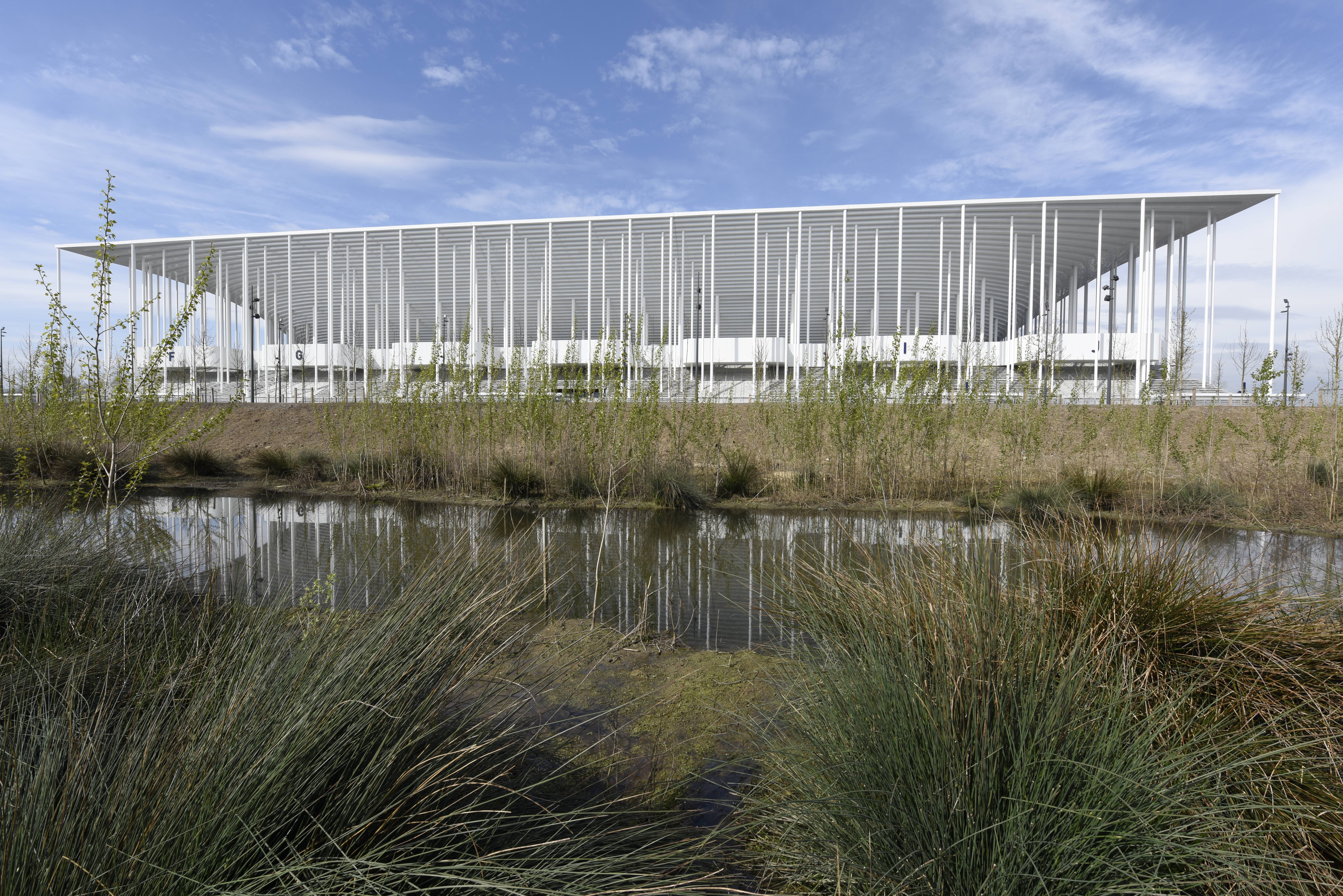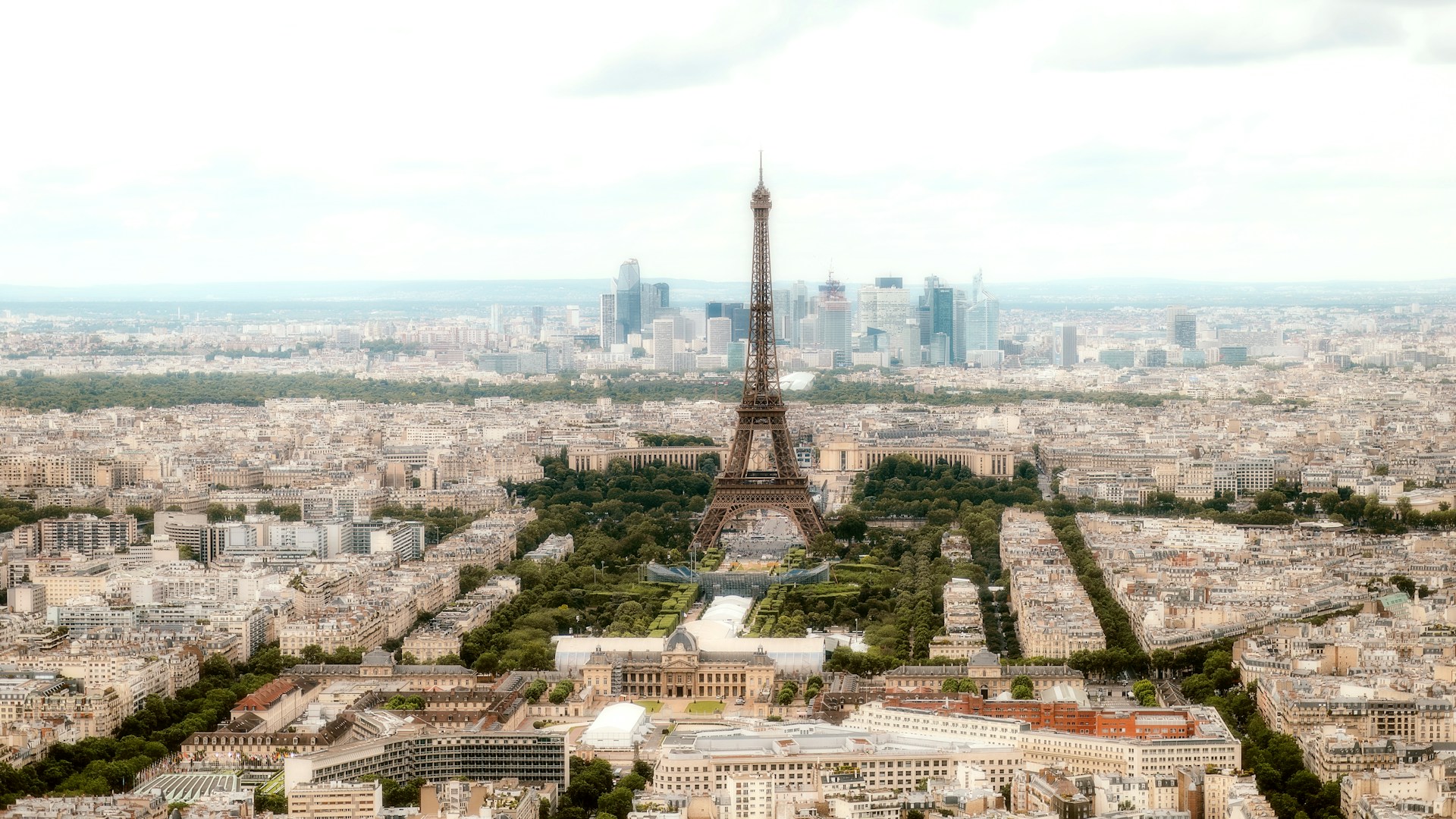Call for entries: The 14th Architizer A+Awards celebrates architecture's new era of craft. Apply for publication online and in print by submitting your projects before the Main Entry Deadline on December 12th!
With the Paris 2024 Olympics just around the corner, excitement is building up. This time, however, it’s not for the usual reasons (well, at least not for the architecture community). Traditionally, the Olympics have been synonymous with grand, jaw-dropping structures designed to leave a lasting impression on the world stage. After all, with more than 200 nations competing, this is the largest sporting event in the world and hosting it can be both an honor and a challenge for a city.
For the past couple of Olympics, iconic stadiums and ambitious venues have pushed the limits of design and engineering, creating lasting legacies for host cities (a trend that reached its peak during the prime era of “starchitecture” in the 2010s.) Unfortunately, they’ve also pushed the limits of sustainability — or rather, the lack thereof. Many of these structures ended up being “white elephants,” underused and costly to maintain, with significant environmental impacts.
This year, the event is taking a different approach. While there has been a noticeable shift towards more sustainable practices so far, Paris 2024 is pushing these efforts further than ever before, aiming to align with the UN’s Sustainable Development Goals. To do so, the 2024 Olympics focuses on using existing venues, reducing environmental impact and creating long-term benefits for the local community. But how did we (finally) get here?
The Evolution of Olympic Architecture
Before starchitecture made its mark, Olympic venues in the 20th century were more functional than spectacular. These structures were built primarily to accommodate the events and athletes, with little thought given to their post-games use or iconic status. The focus was on practicality and utility rather than making an architectural statement.

Messapi, cropped by Blackcat, Stadio Olimpico 2024, CC BY-SA 4.0
For example, the 1960 Rome Olympics featured venues like the Stadio Olimpico, which was originally built for football and expanded for the Olympics, ensuring it had a continued purpose after The Games. Similarly, the 1972 Munich Olympics left a significant legacy with its Olympic Park, which has continued to be used for various sports and public events.
The Olympic Games in the Era of Starchitecture

Arne Müseler / www.arne-mueseler.com, Beijing national stadium 4, CC BY-SA 3.0 DE
With the advent of postmodernism in the late 20th century, the architecture industry began to embrace bold, eclectic designs that often prioritized form over function. This shift was marked by the rise of “starchitecture”— a trend where high-profile architects designed iconic, statement-making buildings. Naturally, this movement found a perfect stage in the Olympic Games, where host cities aimed to showcase their cultural and economic ambitions.
Think of the 2008 Beijing Olympics with the iconic Bird’s Nest stadium designed by Herzog & de Meuron. This stadium, with its intricate steel lattice structure, symbolized China’s growing economic and architectural ambition. While initially celebrated, the Bird’s Nest has since struggled with post-Olympic usage, often criticized for its high maintenance costs and underutilization.

London 2012 Olympic Stadium by Populous, London, UK
The aftermath wasn’t much different for the 2012 Games in London, particularly for some of the new venues. Despite efforts to plan for its post-Games future, the stadium struggled to justify its high costs. Eventually, it found regular use as the home ground for West Ham United Football Club. This transition required additional modifications, which further increased the overall expenses, adding to the financial burden.
On the other hand, the Aquatics Centre, designed by Zaha Hadid, stands out as a success story. Unlike many other Olympic structures, the Aquatics Centre was a much-needed facility that has continued to thrive post-Games.

London Aquatics Centre by Zaha Hadid Architects, London, United Kingdom
This unfortunate trend continued into the 2016 Rio Olympics, where numerous venues faced severe maintenance issues and underutilization. The infrastructure left behind became a burden rather than a benefit, leading to criticism of the sustainability and planning of these grand projects.
Moreover, these issues aren’t exclusive to the Summer Olympics. Winter Games venues have also faced similar problems. Sochi 2014, for example, saw its sprawling Olympic Park and facilities underused post-games.

Arne Müseler / www.arne-mueseler.com, New national stadium tokyo 1, CC BY-SA 3.0 DE
So, by the time the 2020 Tokyo Olympics were being planned, public sentiment had shifted significantly against extravagant Olympic architecture. Zaha Hadid’s initial design for the Tokyo 2020 stadium faced public outcry due to its enormous cost and scale, leading to its replacement by Kengo Kuma’s more modest and environmentally conscious design. Kuma’s stadium emphasized natural materials and integration with the surrounding environment, reflecting a broader shift towards sustainable architecture.
Paris 2024: A New Paradigm
This stroll down Olympics memory lane makes it clear that the days of sensational architecture and impractical grandiosity should no longer be the norm.
Cue to today. The 2024 Olympics were promised to be the most sustainable ones yet. So what exactly is making the Paris Olympics different?
1. Reusing Iconic Venues
Paris 2024 is setting a new standard by extensively using existing venues, minimizing construction costs and, as a result, reducing environmental impact. This approach not only saves resources but also prevents the creation of underutilized structures after the event, which was clearly a common issue in past Olympics.
One prime example is the Stade de France, built for the 1998 FIFA World Cup. This stadium will host the athletics events and ceremonies, showcasing how repurposing existing infrastructure can be both efficient and environmentally friendly. Another notable venue is the Roland-Garros Stadium, famous for hosting the French Open, which will be used for tennis and boxing events. By leveraging these iconic sites, Paris ensures that these structures remain integral parts of the city’s sporting landscape long after the Games conclude.

Bordeaux Stadium by Herzog & de Meuron, Bordeaux, France

Vélodrome Stadium by SCAU architecture, Marseille, France
The use of existing venues extends beyond Paris itself. For events taking place outside the city, venues like Bordeaux Stadium (designed by Herzog & de Meuron) and Vélodrome Stadium (by SCAU architecture) will be utilized.
2. Utilizing Cultural and Historic Sites

Photo by Alin Gavriliuc via Unsplash
Beyond sports venues, Paris 2024 is utilizing several cultural and historic sites, incorporating the city’s rich heritage with the grandeur of the Olympics. The temporary Champ de Mars Arena, located in the park between the Eiffel Tower and the École Militaire, will host judo, wrestling and beach volleyball competitions, providing a stunning backdrop for both competitors and spectators. (After all, are you even competing in Paris if the Eiffel Tower isn’t in the background to witness it?)

Dennis Jarvis from Halifax, Canada, France-000296 – Paris’ Grand Palais (14525102530), CC BY-SA 2.0
Other iconic sites include the Grand Palais (set to host fencing and taekwondo) and the Château de Versailles (where equestrian and modern pentathlon events will take place). These choices reflect Paris’s commitment to integrating the Olympics into the city’s existing urban and cultural fabric, rather than building new, potentially (or, more often than not, completely) redundant structures.
3. New Future-Ready Projects

Aquatics Center Paris 2024 by VenhoevenCS and Ateliers 2/3/4, Saint-Denis, France

Aquatics Center Paris 2024 by VenhoevenCS and Ateliers 2/3/4, Saint-Denis, France
Only one new sports venue is being built for Paris 2024 — the Aquatics Center designed by VenhoevenCS and Ateliers 2/3/4/. This building will host water polo, diving and synchronized swimming events during the Olympics. After the Games, it will serve as a community sports center.
Utilizing 90% renewable or recovered energy, the center’s solar roof is one of the largest solar farms in France, covering 25% of its electricity needs. An efficient water system reduces the need for freshwater, reusing 50% of the remaining water while guaranteeing clean water for all purposes. Emphasizing upcycling, the design includes furniture made from wood waste and tribune chairs crafted from 100% recycled plastic collected from local schools.
The building will be surrounded by abundant vegetation, creating a livable and healthy district for the people of Saint-Denis. Over one hundred trees will be planted to improve air quality, stimulate biodiversity and create new ecological connections.

MIXED BUILDING ATHLETES VILLAGE by DREAM, Saint-Ouen-sur-Seine, France

MIXED BUILDING ATHLETES VILLAGE by DREAM, Saint-Ouen-sur-Seine, France
Another standout development is the Olympic and Paralympic Village, designed to transform into a vibrant, fully-fledged city district by 2025. Unlike previous Olympic villages that often became underutilized post-Games, this village will feature more than 2,500 new homes, a student residence, a hotel and extensive office spaces, emphasizing sustainability with its high carbon storage performance and renewable energy sources.
The design also aims to engage the local community with a rooftop gymnasium, extensive green space and a Food Court that extends the public space and encourages social interactions among residents. A pedestrian bridge will connect the public spaces around Stade de France with the Aquatic Center and the new heart of the future eco-neighborhood of La Plaine Saulnier, ensuring connectivity and accessibility.
4. City-Wide Sustainability Initiatives
Paris 2024’s commitment to sustainability extends beyond the venues. The city has undertaken several initiatives to ensure the greenest Olympics yet. These include creating 250 miles of new bike lanes, extending the Métro network and, perhaps most famously, cleaning up the Seine River. Moreover, 300,000 new trees have been planted to strengthen the urban biodiversity.
A Blueprint for the Future
Paris 2024 is not just setting a new standard for the Olympics, but rather offering a blueprint for future global events. By prioritizing sustainability, reusing existing structures and integrating the Games into the existing urban fabric of the city, Paris is showing the world how to host a major event responsibly.
As we look forward to the start of the Olympics, there’s hope these strategies will not only ensure a successful event but also leave a lasting positive impact on the city and its residents. Paris is proving that it is possible to honor the grandeur of the event while embracing sustainability and community-focused planning.
Call for entries: The 14th Architizer A+Awards celebrates architecture's new era of craft. Apply for publication online and in print by submitting your projects before the Main Entry Deadline on December 12th!





